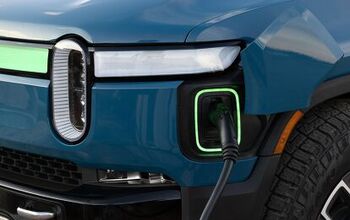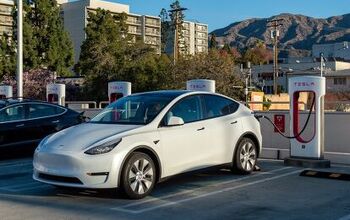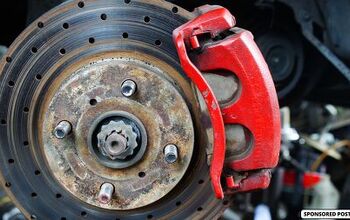Becoming an Eco-Friendly Driver
According to the EPA, “greenhouse gas (GHG) emissions from transportation account for about 27 percent of total U.S. greenhouse gas emissions, making it the largest contributor of U.S. GHG emissions.” And with almost 95% of American households owning at least one vehicle, it remains vital that American drivers—particularly those with traditional, gas-powered cars—try to adopt eco-friendly driving and car-care habits. The good news? It’s a lot easier than you might think.
BE GREEN ON THE ROAD
There are three key adverbs (remember Schoolhouse Rock?) that help you remember to drive in an eco-friendly manner: gently, evenly, smoothly. Any action that takes place suddenly, whether it’s hard braking or rapid acceleration, can lower your gas mileage (a.k.a. use more fuel). If you’re on a highway for a long time, consider using cruise control, which will help you keep a constant speed and increase your fuel efficiency
You can also increase the efficiency of your driving by planning ahead. Determine the shortest possible route from point A to B before you get on the road. If you tend to take a longer route to avoid traffic, consider leaving a bit earlier or later to avoid rush hour gridlock. And if you find yourself idling at a traffic light or in bumper-to-bumper traffic, don’t bother putting your car in neutral. There’s no evidence that doing so actually saves you fuel.
Speaking of fuel, keep in mind that when it comes to fuel grade a higher-octane number doesn’t always mean better. Sports cars and other high-performance vehicles are engineered to account for a higher-octane level which has a higher ignition point and results in a slower burn rate. If your vehicle is designed for standard unleaded fuel it is optimized for 87 octane and a higher octane rated gas could potentially make your car perform worse instead of improving performance. The moral of the story? Use the correct grade of gas for your car.
CAR CARE IS EARTH CARE
Keeping up with regular maintenance of your vehicle helps you avoid unnecessary wear and tear, ensures your car is running as efficiently as possible. In some cases, this means following directions, like not topping off your tank at the gas pump. Doing so can force liquid into the vehicle’s carbon filter that is only designed to trap vapor, potentially damaging your car and preventing the filter from doing its job—reducing emissions.
In addition to simple day-to-day behaviors, consistently monitoring your vehicle and staying up to date on maintenance keeps emissions low. You should read your owner’s manual for recommendations specific to your car, but there are a few services that every vehicle needs regularly. Of course for total peace of mind, every new Toyota comes with ToyotaCare, a plan that covers normal, factory scheduled maintenance, and 24-hour roadside assistance for 2 years and unlimited miles. Most states require a yearly inspection, which helps keep you aware of the condition of every part of your car, including headlights, the undercarriage, and more.
You should also monitor your tire pressure, particularly during cold months when drops in temperature cause the air inside the tire to condense, dropping the pressure. If your tires are underinflated your engine will need to work harder to maintain speed. In fact, over 4 million gallons of gas are wasted every year due to underinflated tires. Think you’re good to go? It’s always worth checking again. The National Automotive Sampling System (NASS) estimates that one in four cars has a tire that is at least 25% under pressure.
Parts of your car that assist in filtration (think air and fuel filters) need to be changed or cleaned regularly to keep systems running smoothly. Regularly scheduled oil changes keep your car running smoothly by providing fresh lubrication, allowing the engine to operate with less friction or particulate interference. Finally, don’t forget about your radiator and cooling system! Your engine has an ideal temperature range that allows it to operate at peak efficiency—make sure that diagnostics on these systems are part of your regularly scheduled maintenance program.
Your investment in a Toyota and your commitment to maintenance can go a long way toward helping “think Green”. But sometimes accidents happen, and when they do you want to make sure you have the option to specify Toyota Genuine Parts replacement. Why do you want Toyota Genuine Parts? Because they’re designed to meet the same levels of quality, safety, and appearance as the parts used when your vehicle left the factory, so your Toyota gets back everything you liked about it before the crash.
Toyota Insurance can help you keep your Toyota a Toyota with expert independent agents to help guide you to the right policy based on your situation, including Toyota Auto Insurance
Worried that you’ll have a hard time keeping up with all this advice? There are options that will help you keep your vehicle in top shape. You can tackle a greener planet agenda “old school” by just keeping a maintenance log or journal in the glovebox. Microsoft Excel offers maintenance log templates to keep track of the dates you have your car serviced if you prefer to use your PC. And of course, you can select from multiple apps that work with your smartphone or tablet to keep record keeping close to hand.
*This is a sponsored article
More by AutoGuide.com News Staff


































Comments
Join the conversation
I have been doing these things for a long time and not interested in an electric car.